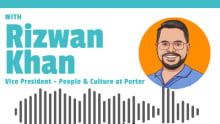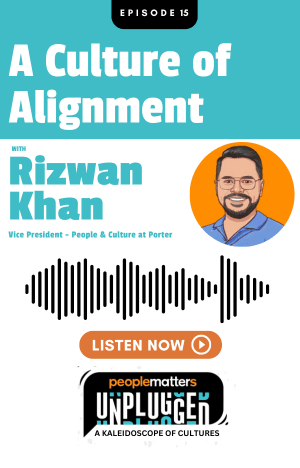Charu Kunwar on transforming organisations, merging human quotient with tech

The role of the CHRO is constantly evolving, with the addition of new responsibilities each year, which hints at its vital importance in the modern workplace. And the biggest tech shake-ups in recent times re-validated the criticality of a people representative on the board. Charu Kunwar, Executive Director, Group Head Human Resources, Lighthouse Canton, who has had over two decades of experience exploring and learning the convergence of tech and social collaboration to enable and engage high performing organisations takes us through the evolving role of CHROs and the imperative changes that will revitalise the HR landscape. In this exclusive interview, she informs us how tech advances will influence the HR function, the HR skills of the future and what’s the unique alchemy that makes Singapore one of the fastest tech adopters, keeping pace with the advancements.
The candid conversation also highlights how organisations such as Lighthouse Canton, a global investment institution is adopting Gen AI to upskill and reskill their workforce, recruit top talent faster and adapt and pivot to the newer challenges on the horizon. Excerpts from the interview:
We all witnessed the dramatic events that shook the tech world in the past few months. Looking at these events, how essential do you think is the CHRO’s seat on the board. How can CHROs better enable leaders and the workforce during transitions and disruptions?
The role of CHROs is evolving, especially in the crucial role they play in board discussions. It's not just about managing HR functions, but the key role of the HR leaders is to align talent strategies with organisational goals. CHRO’s role is to provide insights that go beyond the traditional HR. Their seat on the board is about steering the organisation towards success.
During transitions and disruptions, CHROs take the lead in enabling the organisation, its leaders, and the workforce. They’re in a unique position to bridge the gap between what the organisation needs and what its people need. Some of the ways in which CHROs can enable the organisation during transitions and disruptions are:
- Strategic Alignment: They collaborate with leadership to align HR strategies with the organisation’s overall goals during transitions.
- Change Management Leadership: CHROs lead the charge in developing and implementing change management plans. They help the organisation with effective communication with employees about the change.
- Talent Strategy: They help create talent strategies that align with the organisation’s long-term vision keeping in mind the changes in the organisation.
- Communication and Transparency: CHROs work closely with leadership to ensure clear and timely communication throughout the organisation.
- Employee Wellbeing: They implement programs to support mental health and resilience, to promote a culture that prioritises employee health and wellbeing during transitions.
- Succession Planning: CHROs ensure leadership transitions smoothly during changes. They groom high-potential employees to fill critical positions during and after transitions.
- Employee Culture: They roll out initiatives to maintain a positive workplace culture during transitions.
In conclusion, the CHRO’s seat on the board is essential for ensuring that human capital considerations are integrated into strategic decision-making processes. Their expertise in change management, talent development, and employee engagement helps the organisation to make sure the people side of things is at the heart of every big decision.
With Gen AI integration into different functions of HR, how will the role of HR evolve in 2024? What are the essential leadership skills HR heads need to develop to lead the future of work?
With the integration of Gen AI into HR, organisations will need to transform merging the human quotient with technology. This will lead to changes in HR practices and policies. The HR will use AI to curate personalised employee experiences and use data to make people-related decisions. The HR professionals need to understand AI and use it effectively to make people-related decisions.
With the changing landscape and the emergence of AI, here are some skills that will be key for HR leaders in the next few years:
- Strategic Thinking: HR leaders need to connect HR plans with the overall goals of the organisation. They need to understand the company's vision and create HR processes and policies that set the organisation up for long-term success.
- Adaptability: HR leaders will need to be flexible and open to new ideas, technologies, and ways of working.
- Tech Savvy and Data-Driven: HR leaders need to familiarise themselves with data tools to facilitate informed decision-making.
- Inclusivity: Most organisations are global, with employees from diverse backgrounds and cultures. The HR leaders will need to understand cultural differences, promote inclusion, and make the workplace free from any biases.
- Emotional Intelligence: HR leaders with high emotional IQ can understand their team, handle conflicts, and build connections within the company.
There is fear and excitement among the workforce to the adoption of Gen AI. How do you believe organisations and leaders in Singapore are adapting to technological advances? What are the innovative strategies in place to embed it into the organisational culture?
In Singapore, companies and leaders are keeping up with technology to stay competitive and innovative in today’s fast-changing world. Some of the strategies/actions that are helping organisations to embed AI into their culture are:
- Government Sponsorship: The Singaporean government is doing a lot to support new tech ideas. Various funding schemes encourage businesses to adopt and integrate technology into their operations.
- Learning and Development: Organisations recognise the importance of having a skilled workforce capable of leveraging emerging technologies. They invest in training programs to equip employees with the necessary digital skills to thrive in the digital era. This includes both technical training for AI specialists and awareness training for non-technical staff to demystify AI and foster a positive attitude toward its use.
- Leadership Support: The top leaders in a company must believe in using AI. They need to walk the talk - speak about the benefits of AI and demonstrate how it can help the company.
- Teamwork: HR leaders need to make sure that technical and non-technical teams work together. Collaboration is the best way to ensure that the company achieves its goals related to AI.
By doing all these things, companies are making sure that using AI becomes a part of how they work. It's not just about accepting AI; it's about making it a part of how things get done.
Lighthouse Canton has received the ‘Great Place to Work’ certification across all its entities in Singapore, India, and Dubai. With different cultures governing each of these geographies, how has L&D and wellbeing initiatives been designed to successfully cater to the diverse workforce ?
Managing a diverse workforce across various locations with distinct cultures can be both challenging and rewarding. At Lighthouse Canton, we've found that building a unique and inclusive organisational culture is crucial for fostering unity and a sense of belonging. Here's how we, as a team, have successfully crafted and maintained this cohesive culture:
- Cultural Awareness: We prioritise being aware of and respecting cultural differences. We actively encourage open dialogues about cultural differences and similarities, fostering a deeper understanding among our diverse workforce.
- Inclusive Leadership: Our leadership approach is centered around inclusivity, valuing and leveraging the diverse strengths of our team members across different locations.
- Shared Vision: As a team, we've defined and communicated core values that are in line with our core mission. Our shared vision aligns with the overall goals of the organisation. Our recognition program is based on our values, which helps align employee behaviours with the core values of the organisation.
- Communication: We have a structured internal communication plan to facilitate seamless interaction and collaboration among team members across different locations. We have an in-house social media channel called LC Buzz. It is a successful tool where employees across the locations collaborate to communicate, share their perspectives, and learn more about each other.
- Learning and Development: Our L&D policy sets us apart. While conducting internal training programs, our unique selling proposition (USP) lies in providing every team member with ongoing educational opportunities. This reflects our commitment to investing in our personnel, offering them chances to learn and advance in their careers.
- Employee Wellness and Engagement: At our organisation, we have a robust employee engagement and wellness framework that incorporates globally consistent initiatives while recognising the importance of tailoring programs to specific contexts.
Our structured approach ensures a cohesive experience across all locations, fostering a positive and inclusive work environment.
What are the HR trends that will shape the year, which you can see right on the horizon?
As the workplace continues to evolve, the key HR trends that are emerging include employee wellbeing, digital transformation, employee experience, continuous L&D, DEI, people analytics and continuous performance management.
- Employee Wellbeing: Focus on employee wellbeing will be key. Organisations will implement new wellbeing programs, to support work-life balance.
- Digital Transformation: With the increased use of AI and technology, tasks such as recruitment, onboarding, performance management, and workforce planning will continually transform and evolve.
- Employee Experience: Employee experience will encompass the entire cycle from ‘hire’ to ‘retire’. The employers will try to create a positive workplace culture.
- Continuous Learning: Continuous L&D will become important. Organisations will invest in upskilling and reskilling programs to keep their workforce agile in response to rapidly changing skill requirements.
- Diversity, Equity, and Inclusion (DEI): DEI initiatives will be key, with organisations continually working towards creating inclusive workplaces and providing equal opportunities for all employees.
- People Analytics: It will be leveraged for data-driven decision-making in areas such as workforce planning, talent acquisition, and performance management.
- Continuous Performance Management: Traditional performance reviews will go away, and the focus will be on continuous performance management. This will focus on real-time feedback, coaching, and goal setting.
In the last three decades, the role of the HR has morphed into a highbrow position, working with CEOs to drive attraction and retention among a myriad of other talent operations. And as we move into a tech-driven world, CHROs will own a unique place to make sure the people side of things is at the heart of every big decision within the modern workplace.














